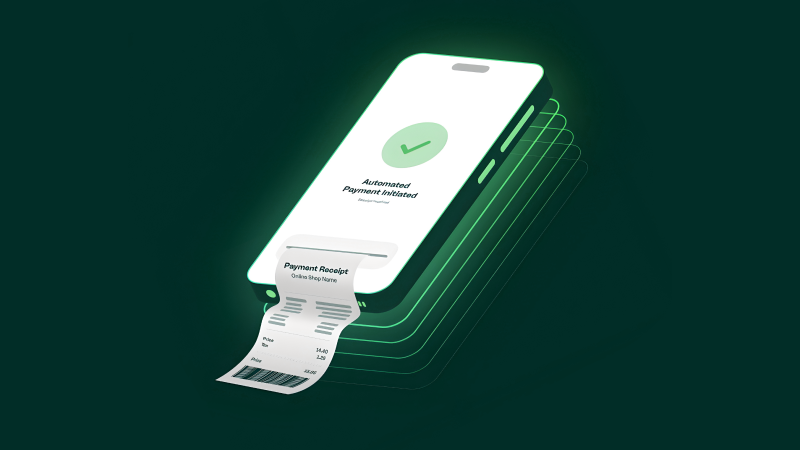The reasons are straightforward:
- Companies seek near-instant transactions to keep cash flow steady.
- They also desire simple payment methods free from unnecessary complications.
In this article, we’ll discuss five digital payment trends shaping the future of B2B payments.
Automated payments
Automated payments have become essential in modern business operations. These systems allow businesses to schedule and process transactions without human intervention, streamlining payment workflows and reducing errors.
Automating repetitive tasks allows companies to free up resources and focus on more strategic activities. Additionally, automated payments reduce the risk of missed or delayed payments, which can disrupt business relationships and lead to cash flow issues.
A 2022 survey on Automation Trends highlights how 41% of businesses surveyed plan to automate their accounts payable processes. Businesses prefer automated payments because they offer a level of predictability and control that manual processes lack. Companies can schedule payments well in advance through automated systems, ensuring timely transactions.
AI and ML in payments
According to a Microsoft study, about 47% of small business owners believe AI has the potential to benefit their businesses. Artificial intelligence (AI) and machine learning (ML) analyze data in real time, allowing companies to combat fraud, simplify payment processes, and automate tasks. These could benefit payment systems.
Using AI and ML in payments has multiple benefits. These technologies can detect fraudulent activity by analyzing patterns and anomalies that might go unnoticed by human analysts. For example, if a transaction deviates from a company’s usual payment patterns, AI can flag it for further review, potentially preventing significant financial losses.
Moreover, AI and ML can simplify the payment process by automating routine tasks. For instance, they can generate and send invoices, track payments, and reconcile accounts, reducing the workload for finance teams.
| AI and ML applications in payments | Benefits |
|---|---|
| Fraud detection | Identifies and prevents fraudulent activities |
| Invoice automation | Reduces manual effort and errors |
| Payment processing | Speeds up transaction times |
The rise of near-instant borderless payments in B2B
The demand for near-instant borderless payments is rising as businesses become increasingly globalized. Traditional cross-border transactions can be slow and costly, often taking several days to complete and incurring high fees. However, payment gateways now use various technologies, including blockchain and alternative payment methods, to facilitate near-instant borderless payments.
Businesses can now send and receive payments across borders in real time, improving cash flow and reducing transaction costs. Such payment flexibility eliminates prolonged wait times to clear funds.
The benefits of near-instant borderless payments include faster settlement times, reduced fees, and increased transparency. These advantages allow businesses to operate more efficiently, simplifying international partnerships and supply chain management.
The growing appeal of virtual cards in business
Virtual cards are a new trend in B2B payments. Businesses generate temporary card numbers linked to a funding account with a line of credit. These cards are for single transactions or limited-time use.
Virtual cards have several use cases in B2B payments. For instance, businesses often use virtual cards for online purchases, where the risk of fraud is higher. Companies use virtual cards to protect their main accounts from unauthorized transactions, among other benefits listed below:
- Virtual cards reduce the risk of fraud by using unique, temporary card numbers.
- Businesses can set spending limits and monitor transactions in real time.
- Virtual cards simplify the reconciliation process, as each transaction ties to a specific card number.
Goodbye to paper checks
Paper check use has been declining for years, and this trend shows no signs of slowing down as more businesses prefer digital transactions.
There are several reasons for this shift.
- First, digital payments are faster and more convenient than paper checks. A check can take days to clear, whereas digital payment processing is near-instant.
- Second, digital payments are more secure. They offer multiple layers of security, including encryption and multi-factor authentication, making them a safer option for businesses.
- Finally, digital payments are more environmentally friendly. As businesses become more conscious of their environmental impact, the move away from paper checks is likely to accelerate.
What’s the next era of B2B payments?
The future of B2B payments is digital, driven by trends such as automated payments, AI and ML integration, near-instant borderless transactions, the adoption of virtual cards, and the declining use of paper checks. These trends change how businesses manage their finances, offering greater efficiency, security, and convenience. As companies adapt to these changes, the shift towards digital payment solutions will grow stronger.

